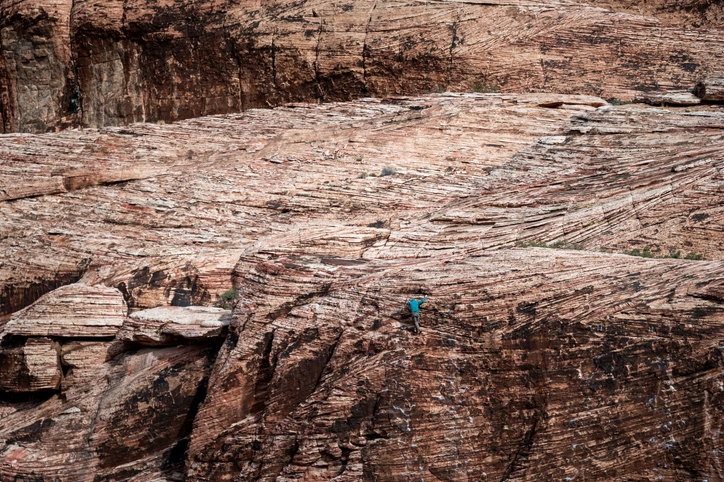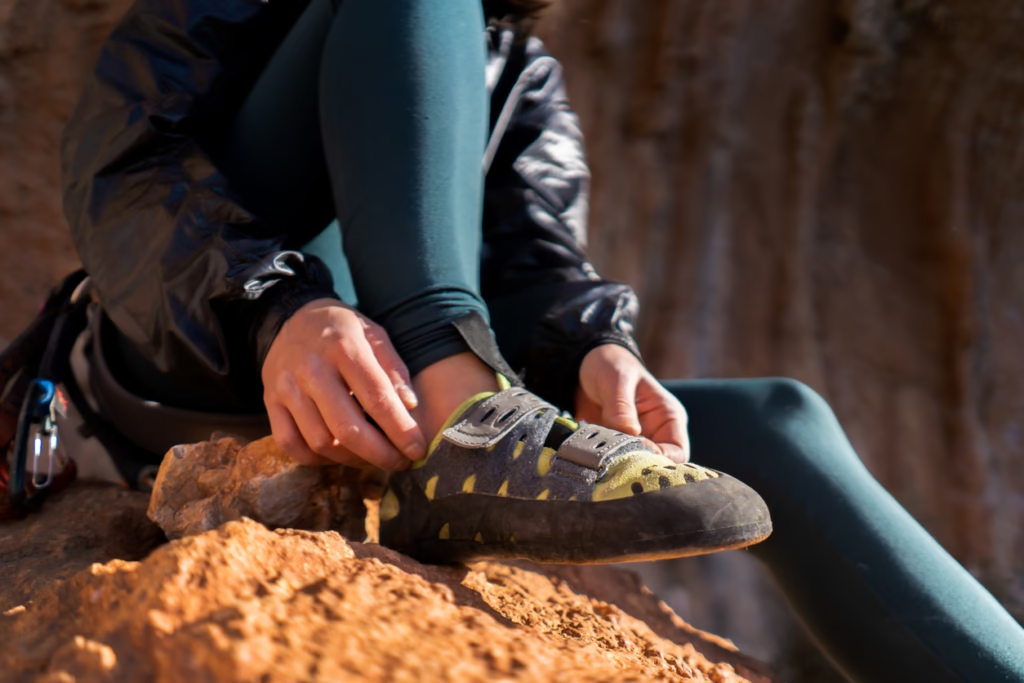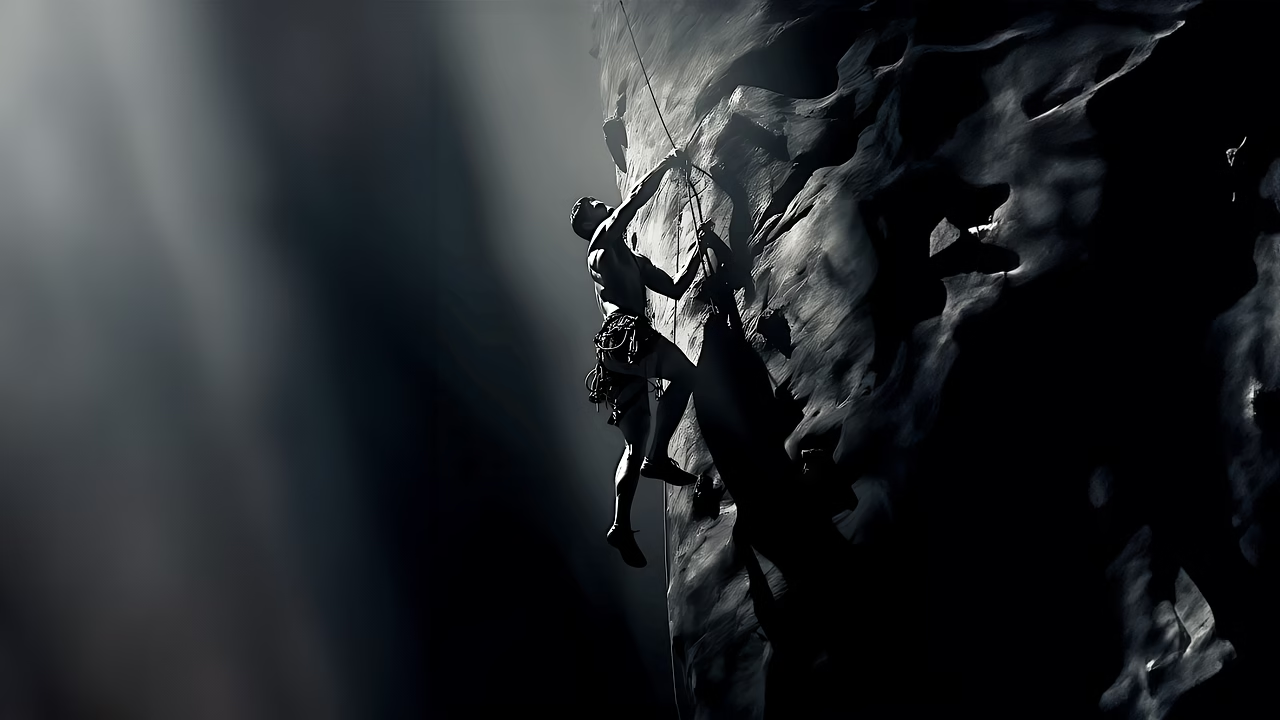Free climbing has been one of the most exciting and rewarding styles I’ve explored, yet it’s often misunderstood. While the name might suggest climbing without any gear, the reality is quite different. In this guide, I’ll break down what free climbing really is, its history, and how it compares to other climbing disciplines—clearing up misconceptions and highlighting what makes it such a unique challenge.
Table of Contents
Free Climbing Explained
Free climbing is a style of rock climbing where the climber uses only their hands, feet, and body to ascend a route, relying on physical strength and technique. Safety gear, such as ropes and harnesses, is used only to protect against falls—not to assist in the climb itself.
Key points about free climbing:
- No Artificial Assistance: Unlike aid climbing, free climbing does not involve pulling or standing on gear for upward progress.
- Focus on Technique: Success depends on precise movements, balance, and strength.
- Use of Gear: While safety equipment is used to prevent falls, the ascent itself relies solely on the climber’s physical abilities.

What Does Free Climbing Mean?
To better understand what free climbing means, it helps to contrast it with other climbing styles:
- Aid Climbing: Climbers rely heavily on gear such as ladders, bolts, and cams to pull themselves upward.
- Free Soloing: A more extreme form of climbing, where no ropes or safety equipment are used at all.
- Sport Climbing: A subcategory of free climbing where pre-placed bolts and anchors are used for protection.
- Tree Climbing: Tree climbing involves ascending trees using natural holds, ropes, or specialized equipment. It can be done recreationally, for sport, or professionally (like arborists and researchers).
In essence, free climbing is about achieving the climb through personal effort, with gear playing a purely safety-oriented role.
The History of Free Climbing
The roots of free climbing stretch back centuries, with notable milestones shaping the sport we know today:
- Early Traditions: Early climbers in Europe in the 18th and 19th centuries, particularly in the Alps, often climbed without the advanced gear available today. These ascents laid the groundwork for modern free climbing.
- The Yosemite Revolution: In the 1960s and 70s, climbers in California’s Yosemite Valley pioneered free climbing techniques on big walls like El Capitan. Figures like Royal Robbins and Lynn Hill pushed the boundaries of what was possible.
- Modern Free Climbing: Advances in gear and training techniques have allowed climbers to attempt increasingly challenging routes. Notable climbs, such as Alex Honnold’s free solo of El Capitan, have brought mainstream attention to the discipline.

Why Choose Free Climbing?
Climbers are drawn to free climbing for several reasons:
- Challenge and Skill: It emphasizes physical and mental mastery, making each ascent a test of personal ability.
- Connection to Nature: Free climbing fosters a closer connection to the rock, requiring climbers to read and adapt to the natural features.
- Pure Adventure: Many climbers describe the experience as exhilarating and deeply fulfilling.
I choose free climbing because it’s the purest expression of movement on rock—every move is entirely up to me, with no aid except my own skill and strength. The mental challenge, problem-solving, and trust in my body make every climb deeply rewarding. There’s nothing quite like the flow state that comes from pushing limits and unlocking sequences through technique and perseverance.
Types of Free Climbing
Free climbing encompasses several subcategories:
- Trad Climbing: Climbers place their own gear (like cams and nuts) for protection, removing it as they go.
- Sport Climbing: Pre-installed bolts and anchors provide safety, allowing climbers to focus on technique rather than gear placement.
- Bouldering: A shorter form of free climbing, performed close to the ground with crash pads for safety instead of ropes.
- Tree Solo: Tree soloing is my favorite form of free climbing—it’s a unique blend of movement, balance, and connection with nature. If you’re looking for an easy way to start, tree soloing is a great introduction. But it is still something that requires skill and confidence. Read more about it here.
Essential Skills for Free Climbing
Free climbing demands a combination of physical and mental skills:
- Strength and Endurance: Climbers must support their body weight and sustain effort over extended periods.
- Technique: Precision footwork, body positioning, and efficient movements are critical.
- Mental Focus: Managing fear and staying calm in high-stakes situations is key to success.
Training in these areas will significantly improve your ability to climb freely and safely.

Is Free Climbing Dangerous?
Free climbing carries significant risks, as climbers rely entirely on their physical strength, mental focus, and skill to ascend without external assistance like ropes or harnesses. However, proper training and preparation can greatly reduce these dangers:
- Train Extensively: Free climbing demands exceptional physical strength, endurance, and technique. Regular climbing practice, strength training, and flexibility exercises are essential for success.
- Know Your Limits: Only attempt routes within your current skill level, and work your way up to more challenging climbs gradually. Overestimating your abilities can lead to serious accidents.
- Master Mental Focus: Free climbing requires a calm and focused mind. Practice mindfulness and breathing techniques to manage fear and maintain concentration during climbs.
- Study the Route: Familiarize yourself with the route beforehand. Understand key holds, potential risks, and exit strategies to avoid unexpected surprises.
- Climb in Optimal Conditions: Always choose favorable weather and ensure the rock surface is dry and stable to minimize hazards.
Free climbing is undeniably dangerous, but with thorough preparation, climbers can approach it responsibly and safely, enhancing their skills and enjoying the unique challenge it offers.
Free climbing is a pure and exhilarating climbing style that has captivated adventurers for decades. By relying on physical skill and mental strength, climbers experience the thrill of conquering natural rock formations. Whether you’re drawn to the history of free climbing, its focus on technique, or the sense of freedom it provides, this style of climbing offers something truly unique for everyone.
FAQs
What is the difference between free climbing and free soloing?
Free climbing involves the use of safety equipment like ropes and harnesses to protect against falls, while free soloing is done without any safety gear.
Do you need special equipment for free climbing?
Yes, free climbing typically requires a harness, climbing shoes, a helmet, ropes, and belay devices. These items are for protection only and do not aid in upward movement.
Is free climbing suitable for beginners?
Absolutely! Beginners can start with indoor sport climbing or bouldering, which are accessible forms of free climbing. Proper instruction and practice are essential.
How did free climbing evolve?
Free climbing has evolved from early ascents in Europe to groundbreaking climbs in Yosemite. Advances in gear and techniques continue to push the limits of what climbers can achieve.
Why is free climbing so popular?
Free climbing offers a combination of physical challenge, mental focus, and a deep connection to nature, making it an incredibly rewarding activity for climbers.


